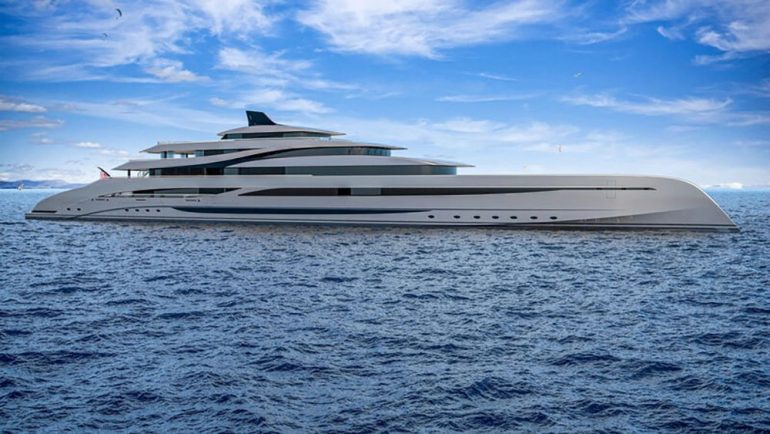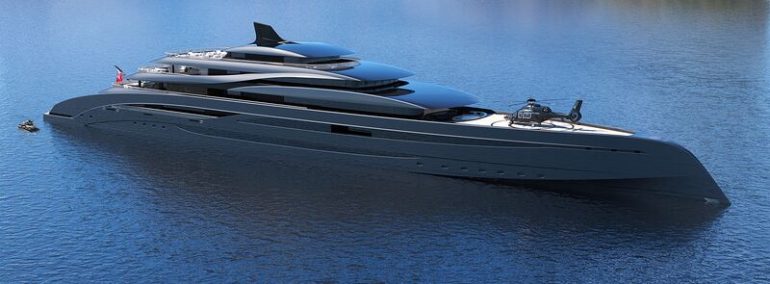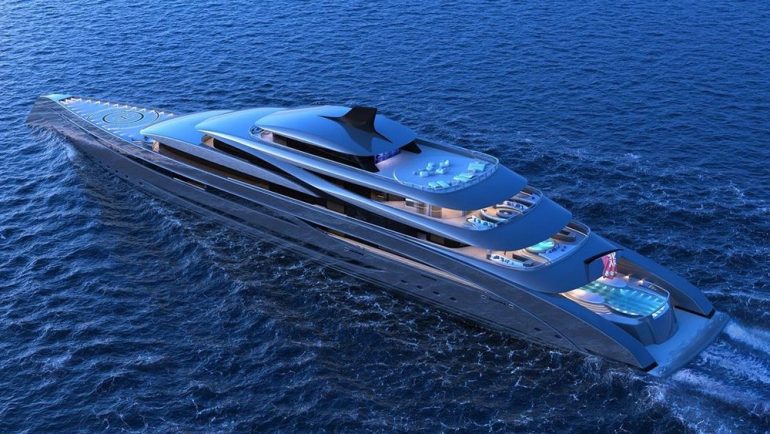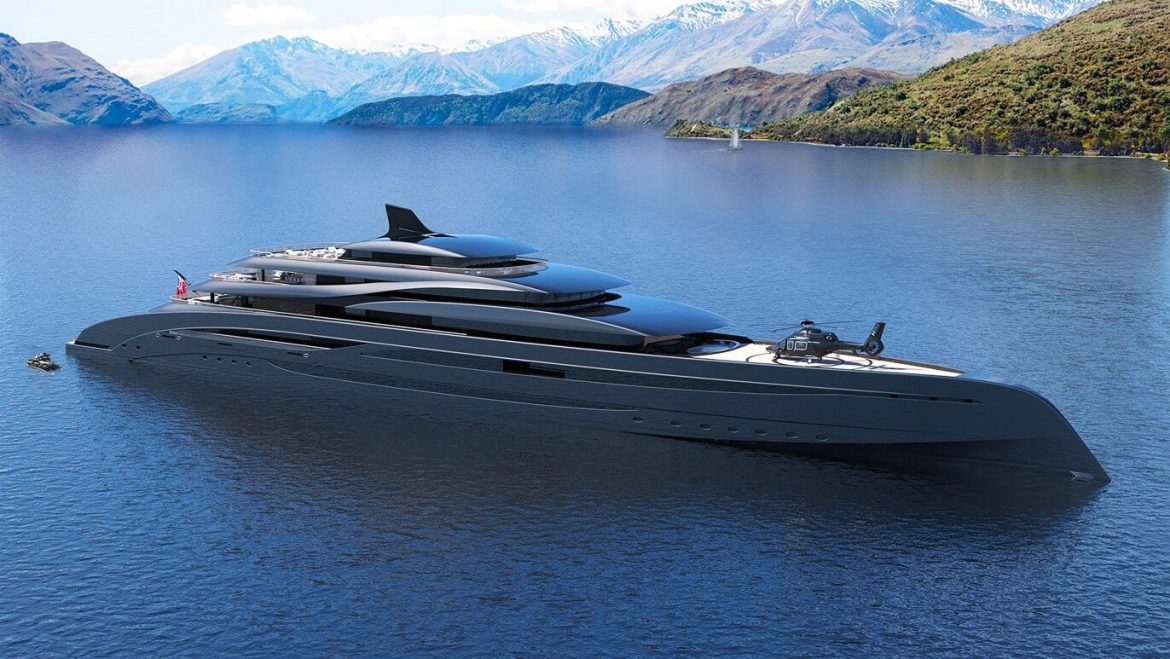Italian yacht designer Marco Ferrari has revealed the renderings for his new 137.5-meter superyacht concept called Project Neptune. The gigantic luxury superyacht features a sleek design with strong flowing lines, giving the vessel a modern but timeless silhouette. “Project Neptune is a yacht with modern lines and timeless elegance,” Ferrari said. The vessel features a steel hull and aluminum superstructure, which houses inside it a long list of uber-luxurious amenities and features. Project Neptune is claimed to have a gross tonnage of over 5,000, giving it ample space on board to be enjoyed by the guests. The superyacht has a total of three pools, which include a stunning infinity pool at her stern along with a smaller swimming pool which is located one level above and is flanked by plush lounges.

The concept superyacht features not one but two helipads. The first one is located at the aft of the sundeck, while the other takes up space on the foredeck. Close to it is the owner’s private outdoor lounge area which houses a jacuzzi. In fact, the entire deck is reserved for the owner, while the stateroom features a study, library, walk-in closet, and an en suite.

The vessel has enough space to accommodate 22 guests in 10 cabins, which are spread across the main deck and include six suites and four VIP staterooms with private balconies. Additionally, there’s a room that can function as an onboard hospital.

To keep the guests entertained, the superyacht offers a plethora of toys. The vessel has been designed in a way that it can carry up to seven tenders, including a submarine. According to the superyacht’s designer, it will be able to accommodate various toys including Jet Skis, Seabobs, kitesurfing equipment, inflatables, kayaks, and fishing and diving equipment.

Project Neptune is equipped with a hydrogen propulsion system and fuel cells in a bid to improve comfort levels and allow her for zero-emissions cruising. Furthermore, to reduce energy usage, the glass panels are coated with a particular heat-insulating foil allowing the required energy for air-conditioning to be lowered significantly.

